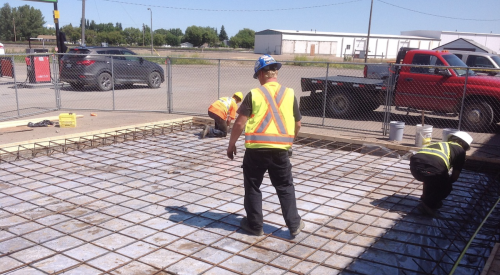 Best practice pictures and instructions make post-installation inspections more effective. |
While home sales have been plummeting recently, warranty claims have risen.
If you're like most builders, your sales have slowed down dramatically, and your team is managing far fewer housing starts. High customer satisfaction ratings and strong word of mouth are more important than ever.
By setting and enforcing quality standards with your team, you can minimize warranty claims and retain more profit from the homes you sell both now and in the future. I'd like to share a few process best practices that some of our clients are implementing:
HIGHER QUALITY = HIGHER PROFITS
Communication between departments and with trades is critical to success. With the proper tools, guidance and discipline, your team can elevate the level of quality in your homes, the opinions of your homeowners and your profit margins.
Here's a four-step process you can follow to establish construction quality standards and ensure they are followed in your company.
1. DEFINE THE STEPS FOR BEST PRACTICES.
Every single day, your teams are gathering information that your company does not monitor. They share this information across departments and with your trades. Some of it is good, while other information can put your homes at risk.
If you haven't outlined steps for best practices for your team to follow and provided them with tools they can use to enforce higher quality standards, you're probably building quality issues into your homes that you will have to pay for later. Take time now to look at every major stage of your construction process — house placement and excavation, foundation, framing, mechanical systems, drywall, etc. Identify the best practices, building materials and installation procedures you want your team to use consistently, and create a set of quality standards that you can share across your company.
 Images make installation checklists handier for your construction team. |
If you don't have your own quality guru and you'd rather not handle this task on your own, you can always use an outside expert to help.
2. SHARE YOUR QUALITY STANDARDS INTERNALLY.
Once you've determined where you want to set the bar on quality, be sure to share your standards with key departments such as design, purchasing, construction, customer care and risk management.
With this information, designers will know what details to incorporate into house plans, purchasers will know which products to buy and the construction department will be better equipped to set expectations and manage trade contractor work. When issues do occur, customer care and risk management will have a road map of the standards that should have been followed, and they'll be better able to determine where the process failed or is breaking down.
Make sure that your entire team can access the information quickly and easily. Post related materials in a central location, perhaps on a password protected Internet site or on your intranet, so that the information is available 24/7. You can add to the repository of quality standards, providing product specifications or Web site links to your preferred suppliers, sharing corporate quality reports or providing links to news on building code changes or other important topics.
3. USE GRAPHICAL TOOLS TO MANAGE QUALITY WITH TRADES.
 Step-by-step instructions with illustrations and text make it easier for your trades to deliver the quality you're looking for. In this graphic, BuildIQ explains proper water management techniques as they relate to brick finishes. |
To give added punch to your quality assurance program, create a set of support materials that combine graphic and text-based information. By adding illustrations to tools such as scopes of work, specification sheets, installation checklists and step-by-step procedures, you'll create a much more useful and powerful set of tools your team can share internally and with trades.
The new support materials you have developed to explain your quality standards internally will appeal to both kinds of learners and will be very useful with trade contractors in general. These tools can be used to set expectations and enforce your quality standards on the job site. The graphics will also help you address any language barriers that may exist.
4. LEVERAGE QUALITY STANDARD TOOLS WHEN ISSUES ARISE.
With any new approach, adoption takes time. Issues will occur. At this stage of the process, the quality standards and tools you have developed will become invaluable to your customer care and risk management teams. They can use the materials to quickly check if the accepted protocols were followed, where errors have been made and root causes behind the issue. The documents will make communication with insurance companies and trades more effective and will enable you to fix issues more quickly. Be sure to keep a record of who the support materials have been shared with and in what stage of the process they were provided.
By putting the right information in the right hands at the right time, you will be able to better align both your key departments and trade contractors behind best practices and improve communications throughout the home building process. When your team has the support and guidance they need from you, the overall quality of your homes will improve, your warranty claims will decrease, and you will have uncovered a whole new source of added profit — which will be critical over this next year and beyond.
The process will require a bit of effort on your part upfront, but the possible rewards are endless.
BuildIQ provides online training on best practices in home building to enable builders to take their business to the next level of quality and performance. More information can be found at www.buildiqu.com.












